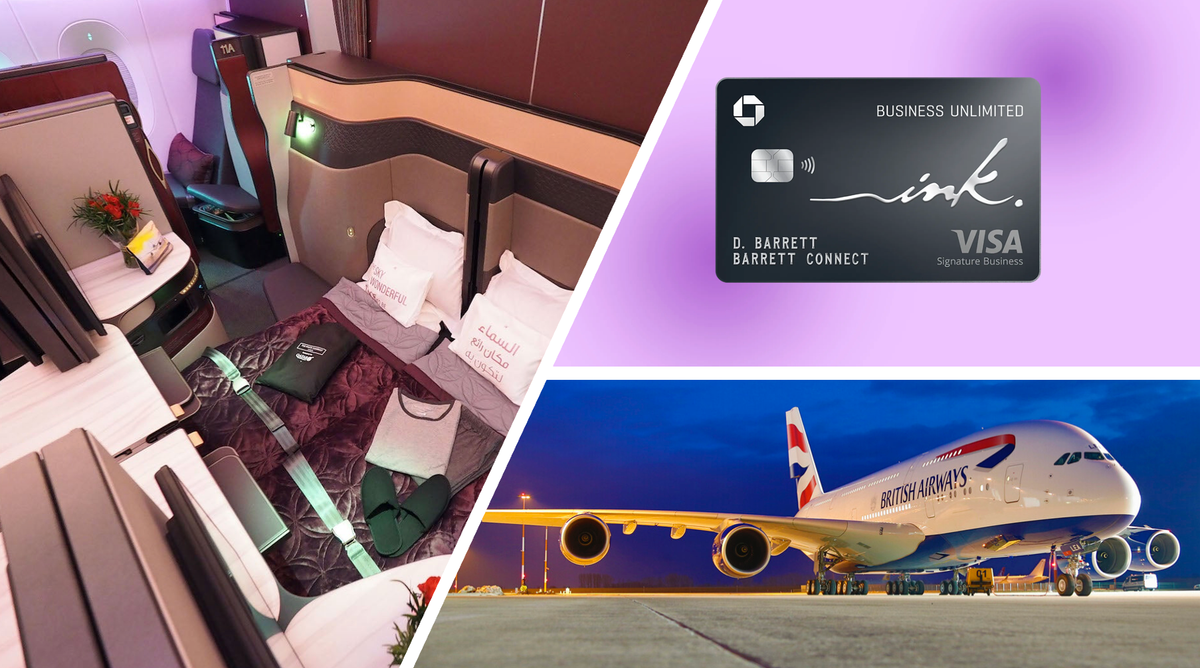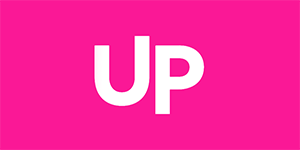50,000 Chase Points Could Turn to $500 or $750 or $2,000+ (Hint: It Depends on You)
50,000 Chase points isn’t just a free trip - it’s a travel asset. Fly business to Europe, book 5 domestic flights, or stay at top hotels. Transfer to Virgin, Iberia, or Hyatt and unlock $1,500+ in value. Don’t cash out - redeem smart and get returns that punch way above their weight.


If You Only Had 60 Seconds to Read This Article (Click Here)
At 50,000 Chase Ultimate Rewards points, you’re no longer dabbling—you’re in the range where strategic transfers can unlock true premium travel. While the base value sits at $500 cash or $750 through the Chase portal (with a Sapphire Reserve), the real upside comes when you leverage transfer partners for outsized value. Virgin Atlantic’s partnership with ANA, for instance, can put you in a $4,000+ business class seat to Japan for around 60k points—within striking distance when paired with a 25% transfer bonus. Iberia business class to Madrid starts at just 34k Avios one-way off-peak, and Aeroplan can put you in business to Europe or Asia in the 50k–60k range. With the right partner, timing, and bonus, your 50k can easily stretch to $2,000+ in flight value.
If you prefer volume over luxury, 50k can fund multiple trips instead of one big one. Flying Blue Promo Rewards often offer round-trips to Europe in economy for 44k or less, while Avios lets you book five one-way domestic flights on American Airlines for around 10k each. For couples or families, that means covering two round-trips in economy, or piecing together a hybrid itinerary using different partners. Want to fly into Paris and out of Rome? Book each leg separately with separate partners—say, Flying Blue and United. Chase’s flexibility across alliances (Star Alliance, oneworld, SkyTeam) lets you customize a full itinerary instead of locking into one program’s pricing model.
Hotels offer another high-leverage path, particularly with Hyatt. Your 50k UR points transfer 1:1 to World of Hyatt and can cover two nights at top-tier properties like the Park Hyatt Paris Vendôme (25k off-peak), or five nights at Category 3 resorts like the Hyatt Regency Bali. Even modest Hyatt redemptions regularly exceed 2 cents per point in value, making it one of the strongest UR use cases. Marriott and IHG may yield less value per point but could be worth it with the right transfer bonus or niche booking. A savvy traveler could even combine 30k for flights and 20k for hotel nights to build out a complete long-weekend trip without spending a dime.
The trap? Burning your 50k inefficiently. Don’t redeem them for gift cards, merchandise, or dynamic-priced flights that barely hit 1 cent per point in value. And don’t scatter them across multiple programs unless you’ve mapped out exact redemptions. Plan for expiration dates (especially with programs like Singapore KrisFlyer), avoid surcharges from programs like BA Avios when booking premium cabins, and always compare award pricing across partners—sometimes United charges 80k for a seat you can book via Aeroplan for 55k. When used with intention, your 50,000 UR points are not just a perk—they’re a tactical asset that can turn into lie-flat flights, luxury stays, or multiple weekend escapes.
Everything else you need to know is just below 👇🏻
Let's Start
Now we’re talking – 50,000 Chase Ultimate Rewards points is a sizable cache that opens the door to more ambitious travel redemptions. At this level, you can start planning international trips, premium cabin flights, and longer hotel stays that simply wouldn’t be possible with 20k. Realistically, 50k UR points can be transformed into a round-trip economy flight to Europe, a one-way business class to Asia, or multiple domestic flights and hotel nights. The tradeoffs remain similar (cash-out or pay with points in portal vs. transferring to partners), but with 50k the upside of strategic transfers grows. Cashing out yields $500, or using the Sapphire Reserve’s portal value gives you $750 in travel – but with smart redemptions, you might squeeze $1,000+ worth of flights or hotels from 50k. Let’s explore how to leverage 50k for maximum travel leverage.
Transfer Partners Overview (50k Level)

With 50,000 UR points, you have enough to engage nearly all of Chase’s transfer partners meaningfully. The “power players” at this tier include:
- United MileagePlus & Air Canada Aeroplan (Star Alliance): At 50k, you’re within reach of some serious redemptions. United miles can get you to Europe in economy (usually ~60k round-trip saver, so you might cover one way for two people, or one person’s round-trip if you catch a lower price or have a tiny top-up). More excitingly, 50k–60k United miles can book a one-way business class to many parts of the world, especially if you use partners. For example, United often charges ~60k miles one-way for partner business class to Europe. Aeroplan, with its distance-based chart, can offer one-way business to Europe or Southern South America in the 50k–70k range. With 50k UR to Aeroplan (especially if you took advantage of a 30% transfer bonus that made 50k UR = 65k Aeroplan), you could book something like Montreal to Paris in business or even Tokyo to Honolulu in business (Aeroplan partner ANA runs that route, ~55k points). At this level, Star Alliance partner access via United/Aeroplan is gold: you can fly Lufthansa, Turkish, ANA, Swiss, etc. potentially in business class one-ways. Even if you stick to economy, 50k Aeroplan could fly two people round-trip to the Caribbean or Central America, or one person round-trip to Europe (Aeroplan has routes like Boston/D.C. to Dublin on partners for ~60k round-trip economy).
- British Airways / Iberia Avios (Oneworld): Avios remain extremely useful. With 50k UR to Avios, consider Iberia Plus for transatlantic flights. Iberia has an outright sweet spot: Business class from the East Coast (NYC, BOS) to Madrid for 34,000 Avios one-way off-peak. That means ~68k Avios round-trip in business – a bit above 50k, but maybe you wait for a transfer bonus or combine with a partner’s UR points to reach that. Even one-way in Iberia business (34k) is a stellar use of ~two-thirds of your 50k. British Airways Avios can also book American Airlines economy to Europe (e.g. NYC to Dublin on Aer Lingus for 13k off-peak each way – 26k round-trip, leaving you almost half your points for hotels or another flight). For Oneworld flights beyond Europe, Avios can be pricey, but you could do one-way business to Asia on Japan Airlines for ~60k Avios (LAX–Tokyo) which is slightly above 50k one-way (77k if from West Coast in business per Avios chart). With a transfer bonus, that could drop into range. Also, consider using Avios for Qatar Airways Qsuite business class: for example, Washington D.C. to Doha is around 70k Avios one-way. Not quite doable with just 50k, but again, bonuses or an extra few points can bridge the gap. Finally, Avios for shorter trips: 50k can cover a lot of domestic flying (e.g., 5 one-way flights at ~10k each on American) if you’d rather take many trips.
- Virgin Atlantic Flying Club: Virgin’s partner awards are legendary. With 50k Virgin points (which you get 1:1 from UR), one standout is Delta One business class to Europe for 50k points one-way (Delta flights from the East Coast to Europe used to price at 50k Virgin points if saver space is there – and often with minimal surcharges). Also, Virgin Atlantic is known for ANA awards: though a bit more than 50k is needed for one way in business (currently 60k from East Coast after devaluation), a 25% transfer bonus (which Chase offered in 2025) would make it possible – 50k UR → 62.5k Virgin, enough for that 60k ANA business class seat to Tokyo. If you catch off-peak, Virgin also offers its own flights cheaply: e.g. NYC to London in economy can be 20k Virgin points one-way, or 47.5k in Upper Class (business) one-way off-peak. At 50k, Virgin is a strong contender if you have a specific high-value partner redemption in mind (ANA, Delta, Air France/KLM, etc.). Just mind the fees on some (VS has surcharges on its own flights, less so on partners like ANA or Delta).
- World of Hyatt: Don’t forget Hyatt at this tier. 50k UR → 50k Hyatt could fund multiple nights at luxury properties. For instance, 50k is two nights at a top Category 7 hotel (30k/night standard, so you’d need 60k; but off-peak Cat 7 is 25k, so two off-peak nights = 50k exactly). Think Park Hyatt Paris Vendôme at off-peak 25k – two nights there can easily cost $1,500 total cash, which is huge value for 50k points. Alternatively, 50k Hyatt could be 4–5 nights at mid-tier Category 3 or 4 hotels (e.g. 5 nights at a Cat 3 off-peak @9k = 45k). That’s a week’s vacation hotels covered. If your travel style leans toward hotel stays, Hyatt remains one of the smartest uses of UR points, delivering 2¢+ per point at high-end resorts.
- Other Notables: Air France/KLM Flying Blue – They frequently have Promo Rewards; 50k could snag a round-trip economy to Europe if a 25% off promo is on (sometimes ~44k miles round-trip from East Coast during promo). Or one-way business in promo for ~53k (you’d be close). Singapore KrisFlyer – 50k KrisFlyer miles could potentially get a one-way in Singapore Airlines premium economy or even business on a shorter route (e.g., Singapore to Tokyo is ~43k in business). Singapore also partners with United, so you could use 50k KrisFlyer to fly on Star Alliance routes (sometimes at better rates than United charges, though be aware of fuel surcharges on some partners via Singapore). JetBlue TrueBlue – We mentioned earlier JetBlue points ~1.4¢ value; 50k UR to JetBlue = $700 airfare on JetBlue. Interesting twist: you can use JetBlue points to redeem on some partner airlines like Hawaiian and Qatar, and even Japan Airlines (via a quirky JetBlue-JAL partnership). In fact, JetBlue charges 93k points one-way for JAL business from Boston to Tokyo (which is steep), but 89k from West Coast. So while 50k won’t cover those, it’s worth noting if you had a few more points or a bonus, JetBlue could be a path to an Asia business class too. Still, JetBlue’s primary use is likely U.S. domestic or Caribbean flights.
- Hotel Programs (Marriott/IHG): With 50k, you could transfer to Marriott Bonvoy if there’s a transfer bonus and a specific need. For example, with that recent 65% bonus, 50k UR became 82,500 Bonvoy. That might book you one night at a top Marriott (some luxury Marriotts charge 80k+ per night). Marriott does offer a 5th Night Free on awards, but 50k points won’t be enough for 5 nights at anything fancy – dynamic pricing makes it hard to plan. Overall, unless you have a compelling Marriott or IHG redemption where point prices are low (or you need to top off an account), these are still generally lower value than airlines or Hyatt.
High-Leverage Redemptions (50k Examples)
With 50,000 points, we can aim higher and further. Here are some sample high-value itineraries and uses that make the most of this point level:
- Round-Trip Economy to Europe (or Two One-Ways): 50k points can realistically get one person to Europe and back in economy, especially using transfer partners. Example 1: Transfer 26k UR to Aer Lingus Avios for a round-trip Boston to Dublin economy off-peak. That’s right – it can be as low as 13k Avios each way off-peak (plus minimal fees), so 26k points total! That covers one person’s round-trip, leaving you with ~24k points. You could use the remainder for positioning flights or hotels. Example 2: If you’re on the West Coast or can’t catch off-peak, Air France/KLM Flying Blue often has promo awards like 15k one-way to Europe from various cities. Two of those tickets = ~30k round-trip. Even standard pricing isn’t terrible: NYC to Paris is often ~21.5k Flying Blue miles one-way in economy (43k round-trip). Transfer 43k of your 50k to Flying Blue, pay maybe $200 in taxes, and you’ve got a transatlantic round-trip valued around $700–$800. Example 3: Mix and match one-ways: use 20k UR for the outbound via one program (say 20k United miles for a flight on Lufthansa to Germany), and use the portal or another program for the return. The flexibility of UR means you can book each direction with a different airline alliance if that yields savings.
- One-Way in Business Class to Asia: If you’re dreaming of lie-flat seats, 50k can get you at least halfway around the world in style. Example: Virgin Atlantic Flying Club – ANA Business Class: 52,500 Virgin points is now the price for ANA business from the West Coast to Japan (it was 45k before, but still a bargain). From the East Coast, it’s 60k. With 50k UR, you’re just shy, but if you caught the 25% transfer bonus to Virgin, 50k UR became 62.5k Virgin points – enough for that 60k ANA business seat. That flight (ANA’s “The Room” business class, one of the best in the world) might retail $4,000 one-way, giving you an astonishing ~8¢ per point value. Another: Aeroplan or United – South Asia: Aeroplan’s award chart might charge around 55k–60k for one-way business from North America to parts of Asia (depending on routing/distance). With 50k (and maybe a small top-up or bonus), you could do e.g. Newark to Delhi in business on United or Air India (Aeroplan around 55k). Another: Iberia/Avios – U.S. to Madrid Business: As noted, 34k–50k Avios one-way gets you business class to Spain. So one 50k chunk could cover JFK to Madrid in Iberia business (34k off-peak or 50k peak). You’d then need a plan to get home (perhaps pay cash for economy back, or use another 50k if you have more UR or a partner’s points). But as a one-way splurge, it’s sweet.
- Multiple Domestic First/Business Flights: 50k can also be spread across premium domestic flights. For instance, you could book two one-way United Polaris business class flights on premium transcontinental routes (like Newark to Los Angeles) for ~25k United miles each (that’s 50k total). Or book three one-way domestic first class flights using Avios (say 15k Avios each for flights ~<= 3 hours in length in a two-cabin first class). Examples: Miami to NYC in AA First ~16k Avios; DFW to San Francisco in AA First ~16k Avios. So 50k could cover three such segments. If you value domestic first at $400+ per leg, you’re doing well.
- Hawaii or Latin America in Style: A couple ideas – Hawaii: 50k UR to Singapore KrisFlyer can book a round-trip on United from the West Coast to Hawaii in economy (it’s 35k miles round-trip per person via Singapore for that route) and you’d have points left. Alternatively, 50k UR to British Airways Avios can book two round-trip tickets from West Coast to Hawaii in economy (since it’s 20k Avios each round-trip, as covered earlier, so 40k for two people, with 10k left over). Great for a couple’s vacation. Latin America: 50k transferred to Aeroplan could fly one person round-trip to, say, Colombia or Peru in economy (typically ~40k–50k points). Or use Avios on American: Miami to Lima is 17k Avios each way, so 34k round-trip economy. That’s only 34k of your 50k – quite efficient. If you want a taste of business class, many U.S. to Northern South America routes are ~35k miles one-way in business on partners (e.g., Avianca via United miles or Aeroplan). You could do one-way in business to Lima (35k), one-way back in economy (17k Avios) all within ~52k total.
- Hotel + Flight Combo Trips: With 50k, you might consider splitting points between flights and hotels for a well-rounded trip. For instance, use ~30k points for your flights and ~20k for lodging. Example: Transfer 30k to United for a round-trip domestic flight for two (15k each, perhaps coast-to-coast off-peak). Use the remaining 20k for two nights at a Hyatt (maybe a Category 4 hotel at 15k/night and one lower category at 5k). That covers a nice weekend getaway – flights and hotels on points. Alternatively, if you have a specific destination: say you want to go to San Francisco for a long weekend. Use 18k UR via portal to book a $270 flight (or transfer to Southwest if that’s better), and 32k UR to Hyatt for 2 nights at the Grand Hyatt SF (Category 5, 20k/night standard – perhaps you cover one night with 20k and pay cash the second, etc.). There are many ways to slice it, but the flexibility of UR means you can design a trip where flights and hotels are both subsidized by your points.
Booking & Execution Strategy
Managing a 50k point redemption requires a bit more foresight than the 20k level, because you’re often booking bigger trips. Here’s how to execute smartly:
- Start with a Plan: Decide on your primary goal for the 50k. Is it one premium cabin experience, one entire trip in economy, or several smaller trips? This will guide which partners to focus on. If you want a business class flight, concentrate your search on programs and routes where ~50k–60k is enough (e.g., Virgin/ANA, Iberia, Aeroplan sweet spots). If you want volume (multiple trips), maybe allocate points to Southwest or domestic Avios flights and map out a couple weekend getaways.
- Search Partner Award Space Early: For international awards (especially business class), begin your search as soon as schedules open (generally 11–12 months out). For instance, if you aim to use 50k for a one-way business to Asia, monitor ANA or United availability at the 330-day mark. Set alerts if possible – tools like ExpertFlyer can notify you of award space (for airlines like ANA, Lufthansa, etc.). Since you have a finite 50k, you want to snag the lowest mileage seats available. For multiple economy seats, start early as well, especially if you need two seats on the same flight.
- Utilize Stopovers & Extra Segments: At 50k, you can even spice up your trip with some creative routing perks. Notably, Air Canada Aeroplan allows a stopover on a one-way for 5,000 extra points. If you have, say, 55k Aeroplan (maybe from 50k UR + bonus), you could fly from the US to Europe, stopover for a few days, then continue to a second destination – all on one award. For example, 60k Aeroplan might let you fly NYC to Zurich (stop 3 days), then Zurich to Dubai, all in business class by adding 5k for the stop (total ~60k). That’s two vacations (Europe and Middle East) in one award.
- Coordinate One-Ways and Open-Jaws: Don’t feel constrained to a simple round-trip. With multiple transfer partners, you can build an open-jaw itinerary (arrive in one city, depart from another) easily. For instance, fly into Paris using Flying Blue miles and back from Rome using United miles. Travel between Paris and Rome on your own (cheap flight or train) and make it part of your trip. This way you see two places and use points efficiently. 50k is often best used for one-way awards, because many programs charge roughly half the round-trip price for one-way. You can thus do two different one-ways in two programs, as noted. Just keep an eye on those departure taxes leaving certain cities (e.g., UK has high Air Passenger Duty in premium cabins – another reason a one-way toLondon in business is fine, but maybe depart from another EU city to save on fees).
- Stacking with Companion Pass or Partner Points: If you have a travel companion, strategize together. 50k UR on its own might only cover one person’s flight. But if your partner also has UR or other points, you can each cover one leg, or combine points for both tickets. For example, 50k UR could fund your flight, and your partner’s 50k UR could fund theirs on the same plane. Or if one has a Companion Pass (Southwest), transferring your 50k to Southwest could effectively cover $750 in flights and your companion flies free alongside – turning those points into maybe $1,500 worth of travel for two. Plan who will pay with points vs. cash to optimize any companion benefits.
- Check Award Alliances vs. Portal Deals: At 50k, some premium cabin redemptions approach or exceed portal value. Occasionally, airlines put business class on sale for cash (e.g., $1,500 round-trip to Europe in biz during a fare sale). With Sapphire Reserve’s 1.5x portal rate, that’s 100k points – too high for you. But sometimes one-way sales pop up (~$700 one-way in biz to Europe during off-season). 50k UR via portal (Reserve) would cover $750, so you could just buy that ticket outright through Chase Travel and still fly business, earning miles back. While transfers usually win for business class, do check fares. If you find a round-trip economy for $450 to Europe, it might be smarter to pay cash or use portal (30k points with Reserve) and save some UR for a different trip, instead of burning 50k on an award. Essentially, with 50k you have the flexibility to either transfer for awards or leverage the portal for any cash deals that arise. Do whichever yields the higher value per point in each scenario.
- Be Mindful of Fees & Surcharges: As your trips get bigger, potential fees creep in. At 50k, you might be considering international routes where fuel surcharges can apply. For instance, booking British Airways flights via Avios will incur heavy fees (especially in biz/first). Work around this by using Avios on partners (Iberia has much lower surcharges, Aer Lingus too, and BA domestic US flights have none). Aeroplan doesn’t add fuel surcharges on partners – one reason it’s great for booking airlines like Lufthansa or Emirates. Emirates Skywards (another UR partner) will impose fuel surcharges if you book Emirates flights – sometimes $800+ on a round-trip first class! If for some reason you want to use UR for Emirates, consider using Aeroplan points on Emirates (Aeroplan’s partnership can book Emirates with no fuel surcharges, but it requires a ton of points and isn’t the best value). For most readers, just remember: aim to use programs that minimize out-of-pocket costs. United, Aeroplan, Avios (on non-BA metal) all do this well.
Pitfalls & Red-Flag Redemptions
With bigger balances come bigger temptations to burn points quickly. Steer clear of these pitfalls to ensure your 50k is well spent:
- Blowing Points on Low Value Fares: It’s easy to get excited and use 50k for convenience, but always calculate value. For example, don’t transfer 50k to Southwest for a ticket that costs $500 cash – you’d be getting only 1¢ per point (50k for $500). If the flight is $500, you could use the CSR portal for ~33k points (at 1.5¢) and save nearly 17k points for later. Or perhaps the flight is cheap enough that paying cash and saving points is wiser. In short, avoid redeeming points for flights/hotels where the math says you’re getting much under 1.5¢ per UR point. You have enough points now to aim for 2–3¢ or more with transfers.
- Settling for Economy if Premium Value Beckons: There’s nothing wrong with economy, but one pitfall is not realizing when a premium cabin award is within reach. For instance, if you have ~60k points (after a bonus or slight earn beyond 50k) and you could fly business class one-way, but instead you burn 50k on a coach round-trip that’s worth $600, you might be undervaluing your points. Perhaps paying $600 cash for economy and using your 60k for a $3,000 business class experience one-way is a better play if that experience matters to you. In other words, at the 50k level consider whether upgrading your travel experience (business/first class, luxury hotel) will yield a disproportionately higher value or enjoyment than just doing more economy trips. The pitfall is playing it too safe and not getting the “premium” value that 50k can unlock. On the flip side, don’t force it if you prefer more trips over one fancy flight – just ensure you’re aware of the options.
- Overpaying in Points Due to Lack of Flexibility: If you insist on a very specific flight on a specific date, you might end up spending way more points than necessary (e.g., booking a dynamic-priced award). For example, using 50k on a one-way economy because it’s peak Christmas might technically use all your points but save you $750 cash. That’s okay value, but maybe shifting your dates or routing slightly could have let you do a business class a week earlier for the same points. Always evaluate if you’re forcing a redemption that doesn’t yield great value. Flexibility (with dates, airlines, routing) is key to avoid “points overpay.” Sometimes it’s better to pay cash for inconvenient dates and save points for when they shine.
- Splitting Points Inefficiently Among Too Many Programs: UR points are versatile, but if you scatter your 50k into multiple accounts without a clear plan, you could strand points. For instance, transferring 20k to United, 15k to Hyatt, and 15k to Avios because you “might use them” could backfire. You might end up with not quite enough in each program to do what you intended. It’s usually better to concentrate points for a specific award. If you do split (say flights and hotel), just double-check that the amounts you transfer will actually cover the award you want. Idle small balances in various programs can expire or devalue over time.
- Ignoring Point Expiration Rules: Now that you may transfer larger sums, be aware of partner program expiration policies. For example, Flying Blue miles expire after 24 months of no activity (unless you have their elite status or a qualifying activity). Singapore KrisFlyer miles expire 3 years after accrual regardless of activity. If you dump 50k into Singapore and don’t use them in 3 years, they will disappear. So, a pitfall is transferring to a program and then not executing your plan. Always commit to a near-term use when moving points. If plans change, look into options like booking and then canceling to redeposit (some programs let you extend miles by paying a fee or by resetting the expiration with some activity).
- Forgetting Opportunity Cost: Remember that 50k UR could alternatively earn you 50k airline miles via sign-up bonuses or other means. Don’t use your UR in a way you wouldn’t value an equivalent airline’s miles. For instance, using 50k UR for 50k IHG points is something you likely wouldn’t do if someone offered you 50k IHG for $750 (the portal value of UR). So treat your UR as cash-equivalents (with boosted value) and ask, “Is this redemption something I’d pay $750 for?” If not, maybe don’t do it. One classic low-value move: merchandise or Apple store redemptions, which at 50k would yield like a $400 iPad (again ~0.8¢ per point). That’s a $750+ travel value you’re trading for a $400 gadget – generally a bad trade.
- Paying High Fees for Awards: We touched on surcharges – avoid scenarios where you burn 50k and then have to pay $500 in fees (common with some first-class redemptions on BA or Emirates). At that point, your points are saving you less. For example, 85k Avios + $700 for a BA business flight isn’t as good as 85k Aer Lingus Avios + $150 for a similar flight. With 50k point redemptions, generally your fees should be relatively low (a few hundred at most for business class, and under $100 for economy). If you see sky-high fees, consider alternative programs.
Summary & Strategic Advice
At 50,000 UR points, you’ve graduated to a tier where significant travel goals become attainable. This is often the sweet spot for travelers looking to cross an ocean in economy or taste front-cabin comfort on a one-way journey. What kind of traveler benefits most? The 50k level is fantastic for the value-conscious globetrotter planning a trip to Europe or Asia on a budget, or for the savvy explorer who wants to leverage a moderate points balance for a big premium class experience. It’s also a great amount for a couple’s domestic trip (flights and a few hotel nights covered), making a quick vacation very affordable.
In terms of when to use them: If you have a plan in mind – say a honeymoon flight in business or a special anniversary trip – use those points when the award you want is available. 50k can be very situation-specific; the perfect award might pop up (a business class seat, a low-cost off-peak opportunity) and it can disappear quickly, so strike while the iron is hot. Conversely, if nothing exciting is available and your trip is far off, there’s no harm in waiting a bit. UR points aren’t losing value sitting in your account, and given the transfer bonus possibilities, holding until you see a good opportunity is fine.
From a strategic standpoint within Chase’s ecosystem, 50k UR might be just part of your earnings. Maybe you earned it via a Sapphire Preferred bonus plus some spending. Think about combining it with other points: if you also use an Ink or Freedom card, your balances together might reach 60–70k, which gives even more options. Also consider if you’re aiming for the next milestone. 100k UR (twice this amount) unlocks round-trip business class possibilities and high-end hotels for several nights. If you don’t have an immediate need, you might build towards that. However, holding points too long can expose you to devaluations (airlines increasing award prices). Chase’s diverse partners means even if one devalues, others may still offer value, but be mindful not to sit on them for years without reason.
A key piece of strategic advice: know your travel goals. 50k can do a lot, but not everything, so focus it. If your goal is a premium cabin, accept that you might use the whole 50k (and then some) on one flight – and enjoy that experience to the fullest. If your goal is more trips, plan out how many getaways you can squeeze out (maybe two weekend trips with flights covered, etc.). There’s no wrong answer, as long as you’re getting good value and fulfilling what you want from your travels.
To wrap up, 50,000 Chase UR points provide a world of opportunity when used wisely. Whether you fly farther, fly fancier, or travel more frequently, this balance is a tipping point where you move from basic redemptions into the realm of memorable experiences. By choosing the right transfer partners, timing your bookings, and avoiding the common pitfalls, you’ll ensure that every one of those 50,000 points works hard to deliver unforgettable travel returns. Happy (point) travels!




